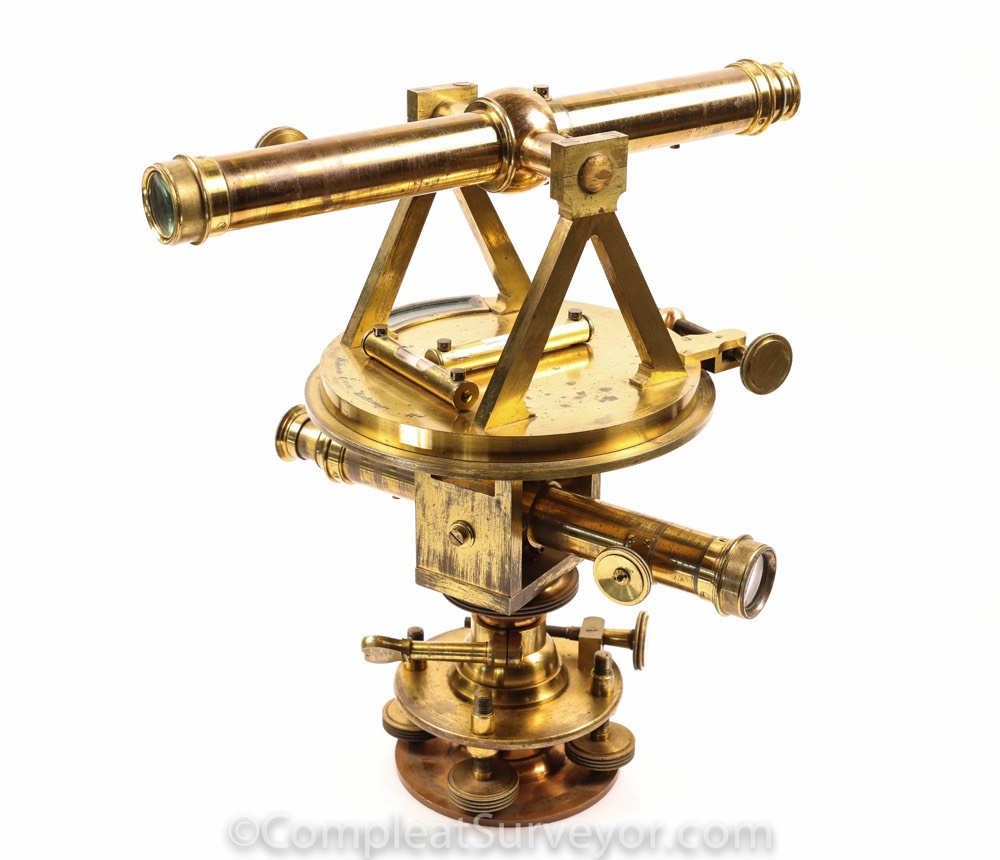
William Ewin
History
William Ewin
Born October 18, 1808 - Died November 24, 1886 1
Instrument Making Period: 1822– Circa1840
Addresses:
Ewin & Heartte
May 11, 1832 3–April 13, 1836 4
“At the sign of the Quadrant, No. 53 South Street, one door north of the Union Hotel, Baltimore” 6
William Ewin (“of the late firm of Ewin & Heartte”)
Circa 1836 to 1840
“At the sign of the Quadrant, 53 South Street, Baltimore”
“W & J Ewin”
“July 19, 1839”
“Mathematical Instrument Makers, Fells-point, Baltimore, Md” 8
William Ewin(g) was born in Leitrim County, Ireland, on October 18, 1808.1 He was one of eight offspring of James and Deborah Dickson Ewin(g), who brought their family to the United States in 1822. Like many Irish immigrants, they came to New York City in search of a better life, escaping the religious strife and abject poverty that were prevalent in Ireland at the time.
Seeking employment at the age of 14, young William presumably entered into an apprenticeship as a mathemat- ical instrument maker with Richard Patten of New York beginning in the latter part of 1822. William’s time served was under the tutelage of Mr. Patten’s foreman and head mechanic, Edmund Brown, and his younger brother, John G. Brown. The relationship established with the Brown brothers during his apprenticeship years would ultimately change the course of William Ewin’s professional career.
Prior to the completion of his apprenticeship, William married Frances Littlefield on February 18, 1827. She subsequently gave birth to William Dickson Ewin in 1829.9 Presumably attaining his majority as a mathematical instrument maker by 1830, William moved to Philadelphia, Pennsylvania, in hopes of furthering his career.
Coinciding with William’s move to Philadelphia, in January of 1830 John G. Brown moved from New York City to Baltimore, Maryland, where he entered into a partnership with Captain Isaac T. Heartte under the firm name of Brown and Heartte. Their advertisement in the Baltimore American on January 5, 1830, lists their “INSTRUMENT MANUFACTORY AND WAREHOUSE at the sign of the Quadrant South Street,” 10 further stating that “Mr. B be ing well experienced in his profession having been for many years attached to the establishment of Mr. Richard Patten of New York.” 10 Captain Isaac T. Heartte was a commissioned naval officer who had by 1819 published his “ARS-NAVIGANDI or TABLES OF LONGITUDE,” 11 which were advertised and sold by Benjamin King Hagger and James Green, both Baltimore merchants.12
Apparently unable to keep up with the demand for new mathematical instruments, John G. Brown corresponded with William Ewin on September 30, 1830,2 referring to him in his letter “as an old acquaintance.”
Dear Ewing,
Having understood from my brother Edward that you are at work in Philadelphia and supposing that you would not have a great objection of shifting your residence for Baltimore has induced me to drop you these few lines … I am settled here in business in company with a Mr. Heartte with every prospect of a steady work and being short of hands and would prefer you as an old acquaintance by far to a stranger, with an inducement of as high wages as you can get in Philadelphia with a promise of steady work … With friendship I remain Yours, John G. Brown, Direct Brown & Heartte Mathematical Instrument Makers, No. 53 South Street, Baltimore.2
In response to Mr. Brown’s enquiry, Mr. Ewin relocated to Baltimore, Maryland, where he entered into a three- year contractual agreement with Mr. Heartte on May 11, 1832.3 The fundamentals of the contract are enumerated as follows:
“Heartte also promises and agrees to furnish and provide the necessary tools and materials for conducting the said Business.” Mr. Ewin’s role in the newly formed partnership declared “that he the said William Ewin for and during the term of three years” will devote “his whole time and attention to the business of Mathematical Instrument making in all its Various Branches.” Mr. Ewin’s wages were set at “the sum of twelve dollars per
week” additionally “Five percent on the value of all Instruments made” by the newly formed partnership of Ewin
& Heartte.3
Ewin & Heartte’s advertisement in the American Railroad Journal #3 for 1835 includes testimonials from a number of prominent engineers and builders involved in the exponential expansion of the eastern railroad systems, including the Baltimore & Ohio hub and terminal being developed in Baltimore.
JAMES P. STABLER, Superintendent of Construction of the Baltimore & Ohio Railroad manufactured for their department of construction, five levels and five compasses…WILLIAM HOWARD, U.S. Civil Engineer, Baltimore, May 1, 1833…B.H. LATROBE, Civil Engineer in the service of the Baltimore & Ohio Railroad Company.6
Isaac T. Heartte’s passing was announced in the American & Commercial Daily Advertiser of April 13, 1836, “Died yesterday morning Capt. I. T. Heartte in his fifty-first year of age.” 4 The disposition of his estate and shop inventory was left in the hands of his acting executors, Nathaniel Hickman and John Hanan, who retained the services of James Green and William Ewin to compile “A true and perfect inventory,” which they completed by April 23, 1836.13
Mr. Heartte’s auction notice was advertised in the Baltimore Gazette and Daily Advertiser on May 23, 1836 with a brief description of its highlights.
EXECUTOR’S SALE OF MATHEMATICAL INSTRUMENTS
By and in pursuance of the last will and testament of the late Isaac T. Heartte, we will sell at the store of said deceased No. 53 South Street on Monday the 30th day of May next at 10 o’clock A.M. all the stock in trade of said deceased consisting in part of one theodolite compass (complete), leveling instruments, a great variety of
telescopes…four sighted theodolite and level pole, chains, artificial horizon with level, pocket sextant, reflecting circles, brass sextant, of different sizes and quality, reflecting telescope. A great variety of new charts, showcases, one Dividing Engine (the only one it is believed in the city, a very valuable article), large lathe with slide rest and horizontal lap, 3 small lathes with slide rest and horizontal lap…Together with a great variety of tools and other articles which will be specified in the printed catalogs…Executors NATH’L. HICKMAN, JOHN HANAN
Recorded is a partial listing of mathematical instruments, general inventory and shop tooling purchased by William Ewin in the amount of $1250.00, resulting from Mr. Isaac T. Heartte’s estate sale which was held on May 30, 1836. Of particular interest is one “Dividing Machine 245.00 which was purchased by Mr. Ewin.
Continuing his mathematical instrument manufactory at 53 South street, “of the late firm of Ewin Heartte,” under his own name, William Ewin advertised in Lyford’s Baltimore Address Directory of 1836 that he continued to manufacture “Engineers’ and Surveyors’ Instruments.” 7
The archived William Ewin family manuscripts document a number of employees, suppliers and subcontractors aiding him in his mathematical instrument making pursuits while he resided in Baltimore, Maryland. These archived documents reveal an in-depth perspective seldom available in the study of 18th and early 19th century artisans.
Among Mr. Ewin’s principal employees was Thomas Brown Timpson, presumed to have had an apprenticeship with Richard Patten, of New York, under the tutelage of his “Uncle Ed Brown.” His response to an inquiry sent by William Ewin to Mr. Timpson on March 7, 1837, regarding Mr. Timpson’s potential move to Baltimore as assistant to Mr. Ewin, stated, in part, that he,
Received yours of the 7th yesterday and as you wished it answered speedily I devote part of today for that purpose.18 … Uncle Ed Brown wants me to give up business and work with him, but I would prefer working with you to anybody else that I know … Mr. Timpson further stated that “I would go to Baltimore providing that I could get twenty shillings per day.” 18
Mr. Timpson moved to Baltimore on the first of May 1837, serving as Mr. Ewin’s lead mechanic and field representative through 1839, when he relocated to Cincinnati, Ohio, establishing a mathematical instrument shop on Third Street.
Another individual who played an interactional role in William Ewin’s mathematical instrument shop was his younger brother, John, whose status was enumerated in several communications by 1839 with their clients referring to them as “W & J Ewin.”
George Town D.C., July 19th, 1839. Messrs W. & J. Ewin. Gent Yours of the 21st February 1838 is now before me stating what articles you had sold for me, such as Quadrant Sextant…and some charts amounting to $62.43… George Town D.C. Your Obt Servt Charles McGill. Messrs. Wm. & J. Ewin, Mathematical Instrument Makers, Fells-point, Baltimore, Md.19
John Ewin continued his mathematical instrument making pursuits in Baltimore at various addresses through 1857 despite his brother’s move to Virginia in 1840.
Numerous documents from suppliers’ and merchants’ interactions with Mr. Ewin are preserved in the Ewin Family archives. These accounts reveal the scope and variety of merchandise and services Mr. Ewin offered at his chandlery in addition to the instruments of his own manufacture.
Abandoning his mathematical-instrument-making pursuits in Baltimore to become a land speculator and gentleman farmer, William Ewin moved to Randolph County, Virginia, with his second wife, Martha Ann Dennis, and their four children shortly after the birth of their daughter Mary Jane on August 31, 1840.29 William had previously purchased his 3400 acres of wilderness property from the estate of a deceased Baltimore couple for $300 on November 19, 1839.29
William’s versatility was once again evident when he was appointed Postmaster of Western Ford by the Postmaster General of the United States on November 17th, 1840, taking the oath of office on December 18th.29 In addition to his farming activities, William became a self-taught lawyer by 1855, which led to a long and successful career as a land speculator, farmer, surveyor and politician. At the time of his death on November 24, 1886, which is etched on his gravestone at the family burial plot at their family farm, William was recognized as the founding father of Tucker County.29
The William Ewin Papers can be found at the University of West Virginia.
Notes:
- 1. Inscription on tombstone in the family graveyard overlooking the Cheat River, St. George County.
- 2. UWVA 34b Letter from John G. Brown to William Ewin, September 30, 1830.
- 3. UWVA042 Contractual agreement May 11, 1832, between William Ewin and Isaac T. Heartte.
- 4. American & Commercial Daily Advertiser, Vol. LXXIII No. 13312, Wednesday morning, April 13, 1836.
- 5. 1850 U.S. Census, District 52, Randolph, Virginia.
- 6. Advertisement in The American Railroad Journal #3, 1835.
- 7. Advertisement in Lyford’s Baltimore Address Directory for 1836.
- 8. UWVA06 Letter from Charles McGill to Messrs. W & J Ewin.
- 9. Clan Ewing of Scotland, Elbert William R. Ewing (Ballston, VA: Cobden Publishing Co.), p. 226, 227
- 10. The Baltimore American of January 5, 1830.
- 11. ARS NAVIGANDI Tables of Longitude (Baltimore: B. Edes, 1819). (Author’s collection.)
- 12. Smart, p. 19.
- 13. UWVA Isaac T. Heartte’s Inventory, compiled by James Green and William Ewin on April 23, 1836.
- 14. Baltimore Gazette & Daily Advertiser, Monday, May 23, 1836, Vol. 85.
- 15. UWVA47 Result of items purchased by William Ewin on May 30, 1836 of Isaac T. Heartte.
- 16. Rittenhouse Vol. 6, No. 2, Journal of the American Scientific Instrument Enterprise, American Railroad Goniometer, Dale R. Beeks.
- 17. UWVA54b Correspondence from Theidore F. Drayton, March 12, 1837, to Mr. Ewing, Math Inst Maker. Instrument courtesy of Dale R. Beeks.
- 18. UWVA55 Correspondence from Thomas Brown Timpson to William Ewin, New York, March 12, 1837.
- 19. UWVA06 Correspondence from Charles McGill, Georgetown, D.C., to Wm. & J. Ewin, July 19, 1839.
- 20. UWVA16 Merrill & Davis, New York, March 19, 1838, various items sent to Wm. Ewin (Mr. Timpson).
- 21. UWVA24b Benjamin King Hagger & Son, Baltimore, December 1, 1838, bill for targets.
- 22. UWVA30b Alex Megarey, New York, April 7, 1838, various items sent to Wm. Ewin.
- 23. UWVA25 McAllister & Co., Philadelphia, December 6, 1838, one microscope sent to Wm. Ewin.
- 24. UWVA33 E. & G.W. Blunt, New York, May 4, 1839, navigational items sent to Wm. Ewin.
- 25. UWVA23 Wm. Peters, Baltimore, Founder, October 24, 1838.
- 26. UWVA26 Wm. Peters, Baltimore, Founder, February 6, 1839 (Mr. Timpson).
- 27. UWVA30a James Anderson, Engraver, April – July.
- 28. UWVA51 James Green, Baltimore, payment to James Green from Wm. Ewin, Feb. through Aug. 1837.
- 29. IRISH BOY IN AMERICA, Garald Baughman (The West Virginia Historical Society, Vol. XX, No. 4, Oct. 2006).
Labels
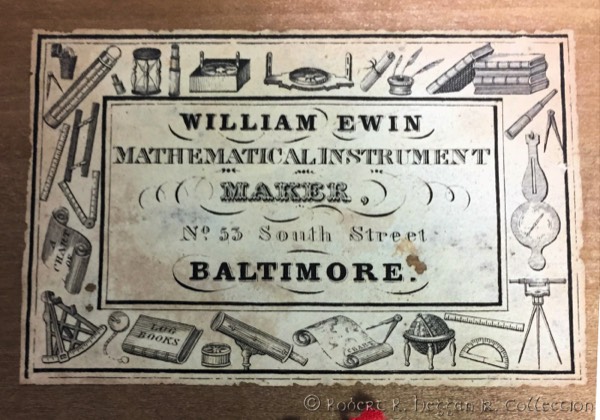
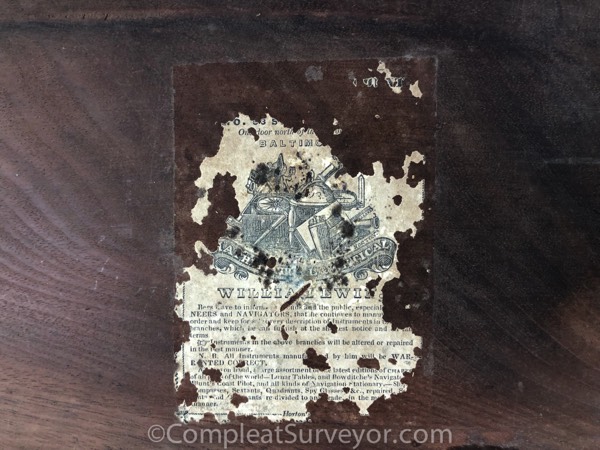
American Railroad Journal Advertisement (March 1834)
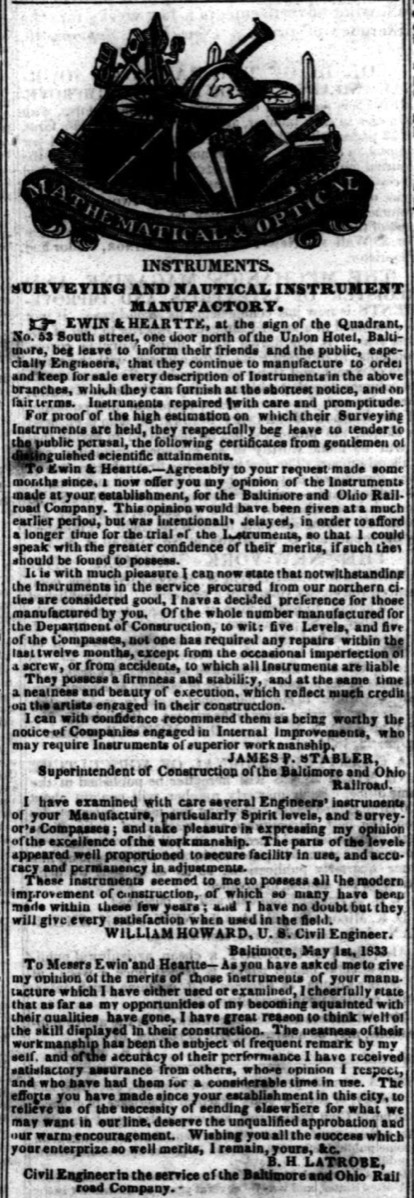
Instruments Made by William Ewin
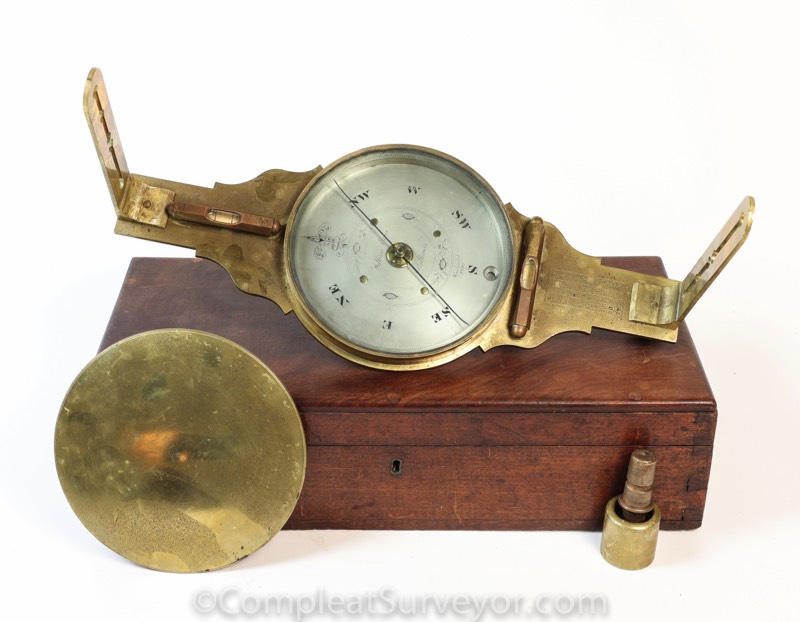
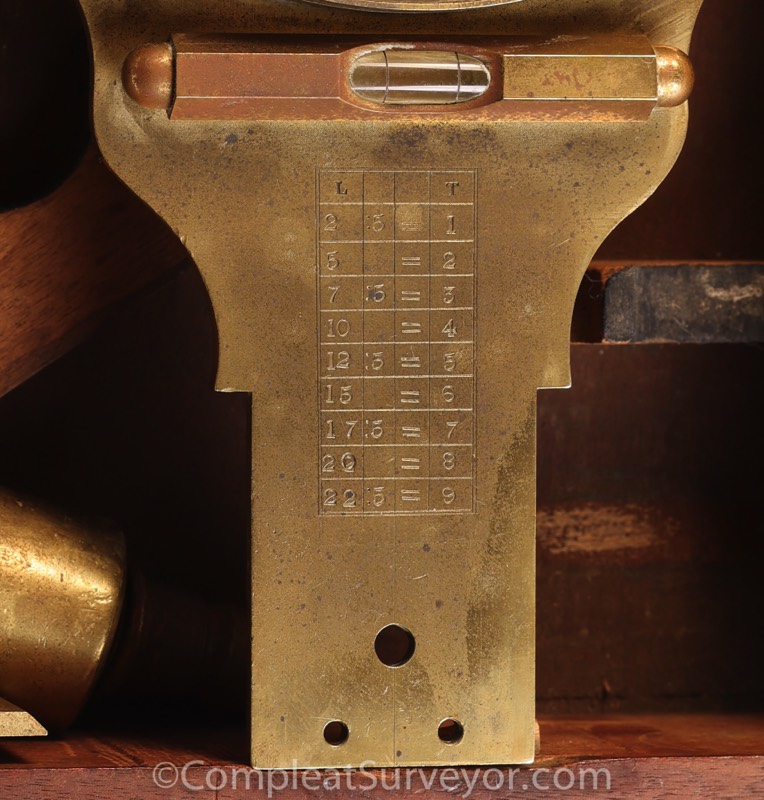
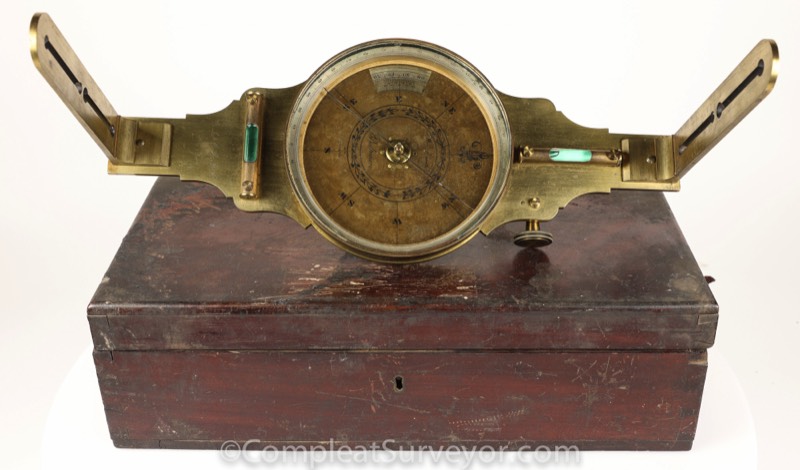
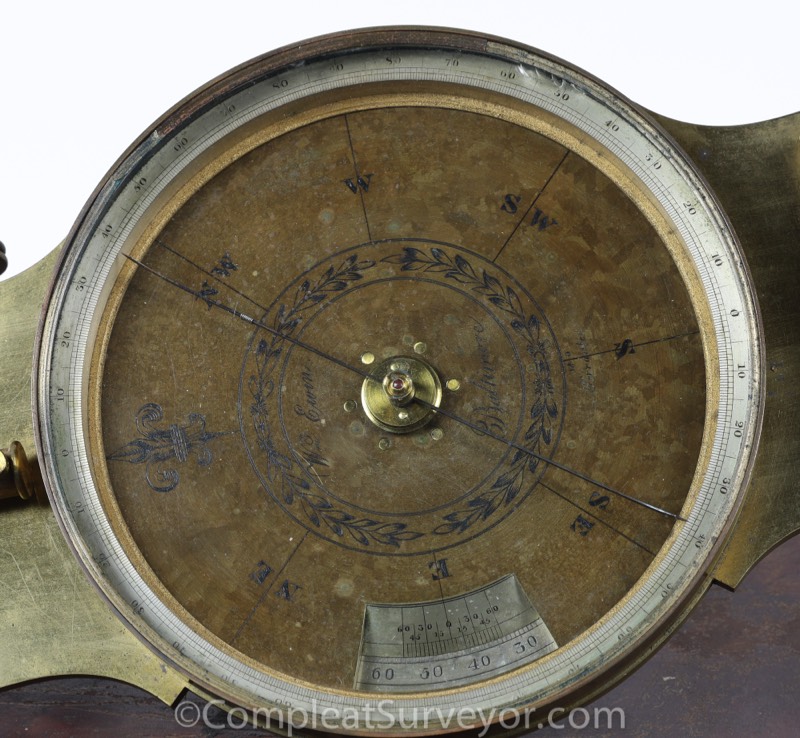
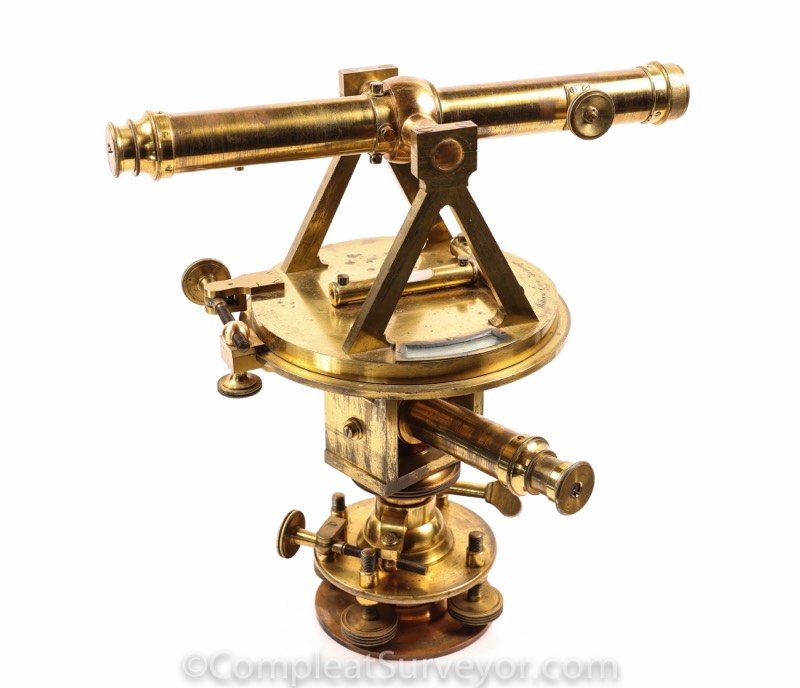
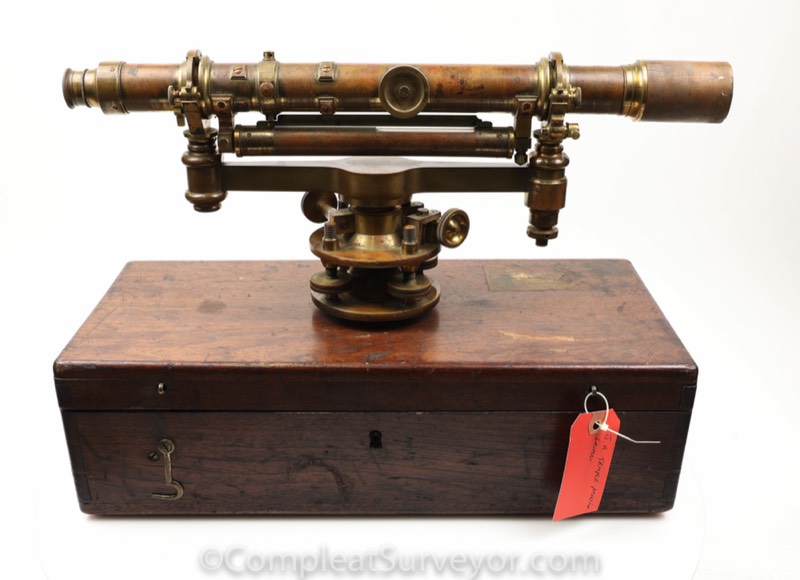
© 2020 Russ Uzes/Contact Me